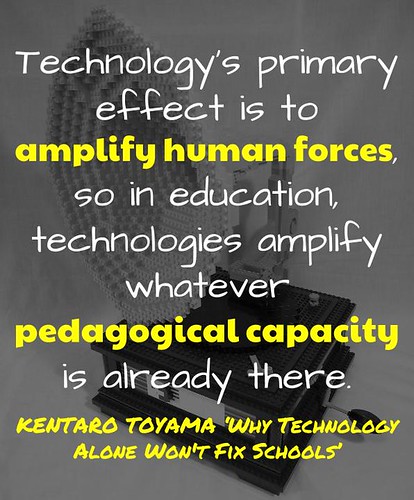
flickr photo shared by mrkrndvs under a Creative Commons ( BY-NC-SA ) license
Teaching intervention raises many opportunities that aren’t always as possible in a normal classroom, such as the use of Lego to represent Mathematical concepts (although Mark Anderson provides a solution for this, suggesting that each student gets a small bag). Another opportunity that has arisen has been the use of technology.
From my experience there are a range of reasons why students end up in intervention. For some it is the support, while others it is about confidence and encouragement. However, there is a group who sometimes just don’t necessarily care (see both Tom Barrett and Dave Cormier for discussions on this matter). Although limited as to how much I can modify the tasks at hand, I have instead focused on modifying the product that students produce.
Here then are some examples of the ways I have used technology to improve student outcomes:
Interactive Vocabulary
Vocabulary has been a particular focus this term. At the start of a session on persuasive language, students worked collaboratively to make a word web, where each word had to be connected with another word. This forced students to not just brainstorm words, but look closely at the words that were already there. They ended up with roughly twenty words. I then used an iPad to capture the finished product and added it to Book Creator and gave students the challenge of not only writing definitions for the various words, but recording them as well. Using small whiteboards, students wrote their definitions and before recording did a practice run. Just about every student rewrote their definition after the initial run-through, not because anyone told them that they were wrong, but rather as they read it out loud they found things that they wanted to change. After recording, we were left with an interactive page full of definitions.
Multiple Representations
Students were exploring the representation of fractions and were given the challenge to show a fraction in different ways. They were then required to provide a short explanation of what they created which would be recorded using Adobe Voice. The intent was to support students with the appropriate use of language. This was also a useful activity for identifying various misconceptions in regards to fractions.
A Current Affair
One of my groups was working on recording their own episodes of A Current Affair. Having recently purchased Touchcast’s Studio in a Box, a collection of resources designed to help make any space a studio. I set up the green screen on the board in our classroom and students used the TouchCast app to record the different episodes. To do this they emailed their scripts to me which were then copied into the teleprompter. After some trial runs, students ran through their presentations. What was interesting was that although all were willing to sit in front of the class to present, the addition of video forced many to reconsider how they spoke. This added a level of feedback and self-critique was something that was previously absent from the activity.
It can be so difficult to find experiences which allow students to develop their speaking skills, especiallying in regards to fluency and intonation. Here are a few things that I have found, but what about you? What are some of the things that you have done? As always, comments welcome.
If you enjoy what you read here, feel free to sign up for my monthly newsletter to catch up on all things learning, edtech and storytelling.
Speaking, Listening and Intervention by Aaron Davis is licensed under a Creative Commons Attribution-ShareAlike 4.0 International License.

Hi Aaron. How can I see what the kids have done – or did I miss that bit? Would love to be able to have a go at some of these activities. Is Student in a Box expensive? Great post. Feeling inspired to have a go at some of these ideas
I don’t like to include student work within my personal blog. The TouchCast app is free, while the Studio in a Box provides grips, clamps, green screen and microphone. I think that the teleprompter alone is fantastic. Not only does it provide the text on the screen, but sets the appropriate speed to read it at. Well worth the investment. I was put onto it by Peter DeWitt who has written a few useful posts.